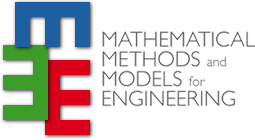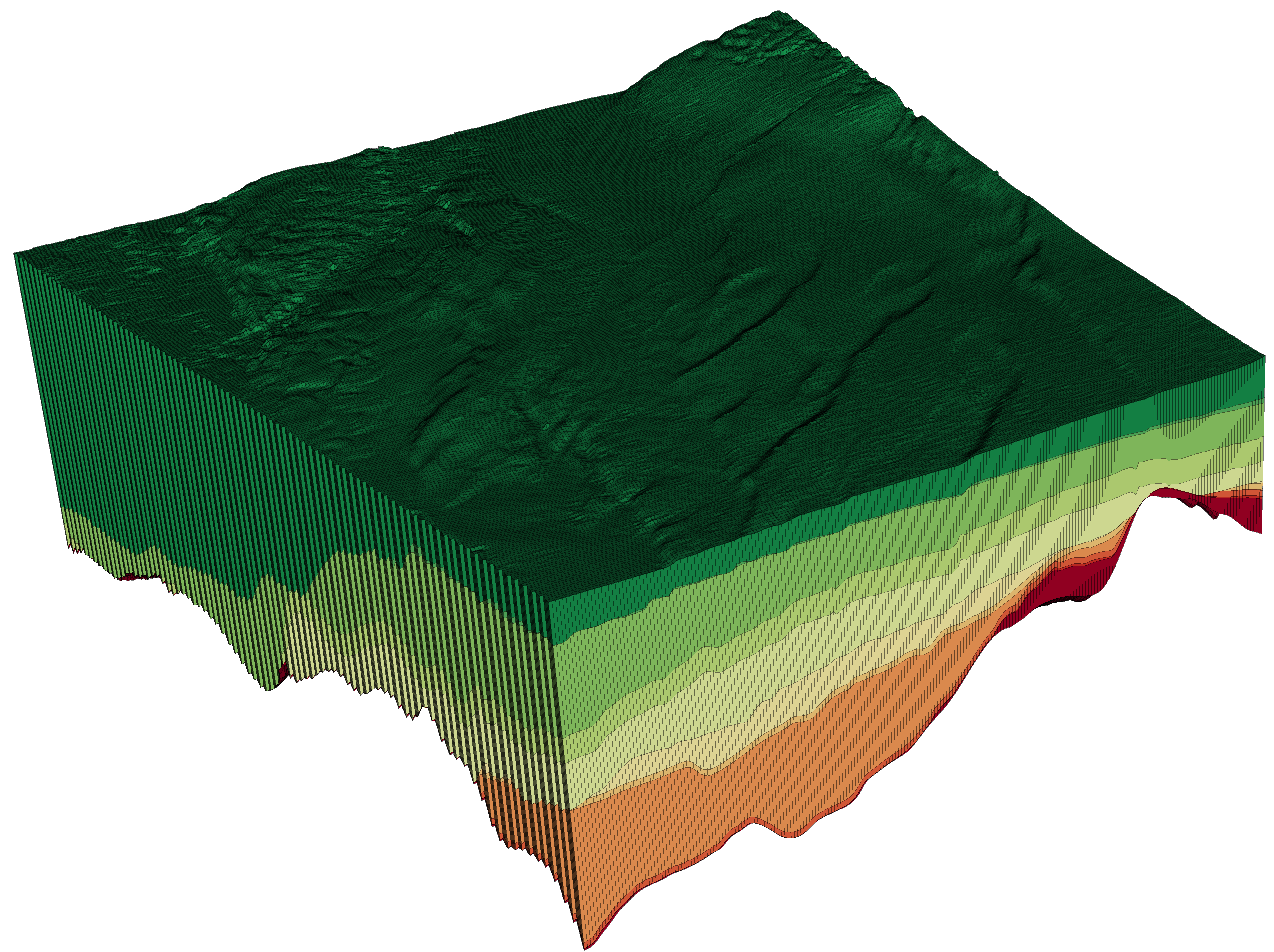The fastest geomechanical solver for extreme-size simulations
ATLAS is a 3D Finite Element (FE) software, specifically tailored for geomechanical simulations. It is currently used for the simulation of and subsidence, rock integrity, fault activation, induced seismicity and many other relevant geomechanical processes related to the exploitation of subsurface resources.
What makes ATLAS outstanding if compared to other available scientific software is its speed and efficiency: ATLAS is natively designed or parallel supercomputers and it takes advantage of GPU-accelerated architectures. Hence, it allows for easily simulating extreme-size domains with several hundreds of millions of elements.
ATLAS is designed and implemented as a computational kernel library (with API), without any preferred GUI. This makes ATLAS compatible with every other existing computational workflow. Its results can be visualized by any common Graphical Visualization tool, including opensource software such as Visit or Paraview.
User manual
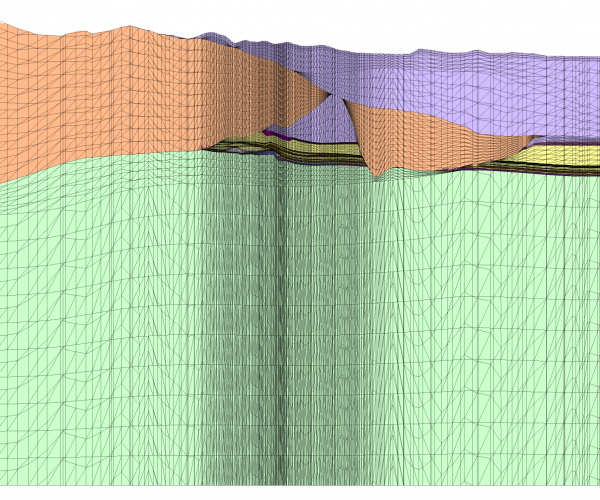
GEOMECHANICS: The target of ATLAS
ATLAS is specifically tailored for geomechanical simulations. In particular, it is able to model every mechanical aspect related to the exploitation of subsurface resources, such as the withdrawal and injection of water, gas, oil, CO2 and so on.
ATLAS computes the most important geomechanical quantities associated with these operations: surface displacements, stress and strain within the rock/soil layers, plastic and viscous deformations of the geomaterials, interface loads and sliding of faults.
As far as geomechanical problems are concerned, the non-linear mechanical behavior of the material is a key aspect. ATLAS provides several constitutive laws: isotropic and anisotropic linear and non-linear elasticity, Drucker-Prager and Modified Cam Clay elastoplasticity, Vermeer-Neher viscoplasticity. Moreover, the modularity of the code allows for a quick implementation of other stress-strain relations.
Interface elements in ATLAS are modeled through a very robust formulation based on Lagrange Multipliers. These elements simulate the contact between the two side of the faults, assuming also several non-linear friction laws and allowing to take into account the accumulated stress due to an eventual fault sliding.
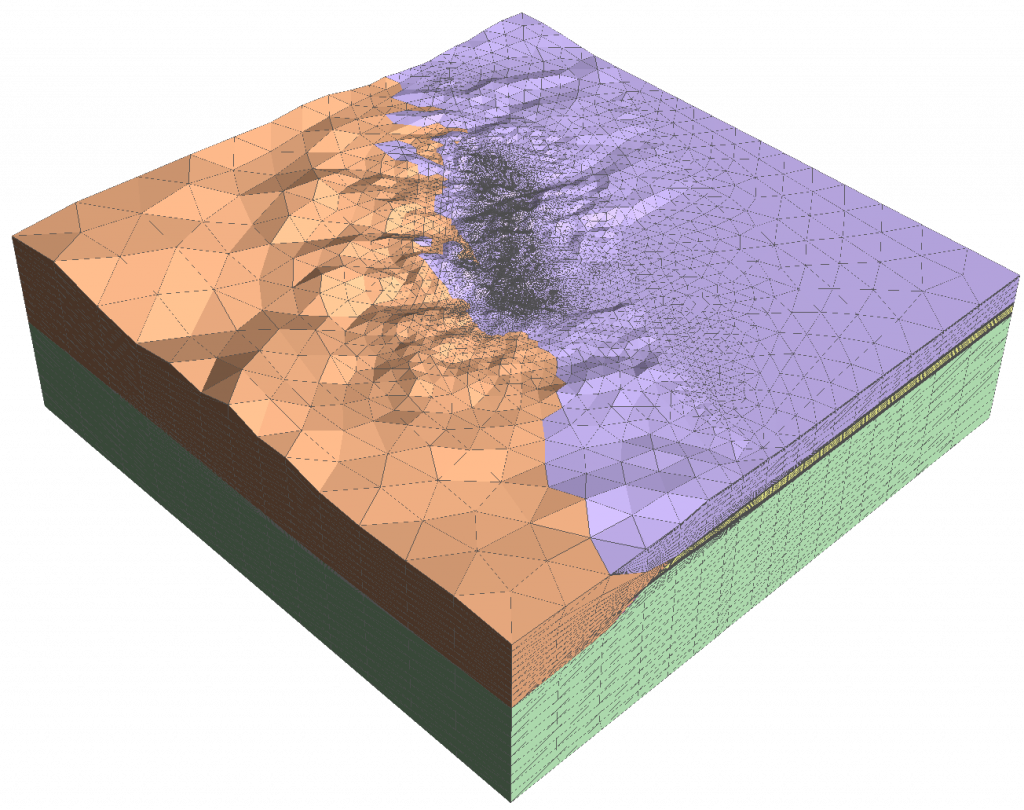
Extreme Size: Scalable up to hundreads milions of elements

ATLAS is specifically designed for the most modern High Performance Computing (HPC) and it is thought to be ready for the next generation Exascale systems.
At the heart of Finite Element (FE) software resides numerical linear algebra routines.
When comes to the solution of extreme-size FE models, it is well known that, for large models, the most time consuming task (up to 95% of the total computational time) consists in the solution of the arising linear systems of equations.
ATLAS takes full advantage of Chronos, a proprietary collection of sparse linear algebra kernels designed for HPC. The library implements best-in-class preconditioners to incredibly accelerate the convergence, and is able to solve systems with hundreds of millions (or even billions) of unknowns
Every innermost numerical kernels of ATLAS is highly optimized to increase the efficiency of the code.
Fast: A GPU-accelerated solver
ATLAS is natively implemented for Graphical Processing Units (GPUs).
GPUs have been originally used for gaming and 3D rendering. However, with properly designed algorithms, GPUs offer incredible speed-up also for scientific and numerical computations. This allows approximately a 10x speed-up if compared with CPU-only based software.
Mainly written in Fortran and C++, ATLAS uses openMP directives for shared memory processing and CUDA to enable GPU accelerators. Interprocessor communication for distributed memory computation is accomplished through MPI. The library can be tailored and optimized for the specific computational architecture available, making ATLAS compatible with almost any modern HPC system.
Thanks to this dramatic reduction of simulation time, scientists and engineers can develop more accurate and reliable models, as well as investigate a broader range of scenarios.

Compatibility: Minimize the impact on the workflow

ATLAS is designed and implemented as a computational kernel library (with API), without any GUI. This allows ATLAS to be compatible with every other existing computational workflow, and its input/output can be fully adapted to the user requirements.
ATLAS has been currently connected to many other software solutions (ABAQUS, Eclipse, SKUA and so on). The results of ATLAS are available in standard format and can then be visualized through user-friendly visualization tools, including also opensource software such as Paraview or Visit.
For the above reasons, including ATLAS in new workflows requires a minimal effort and the results can be visualized and post-processed together with other existing simulation tools.
Applications
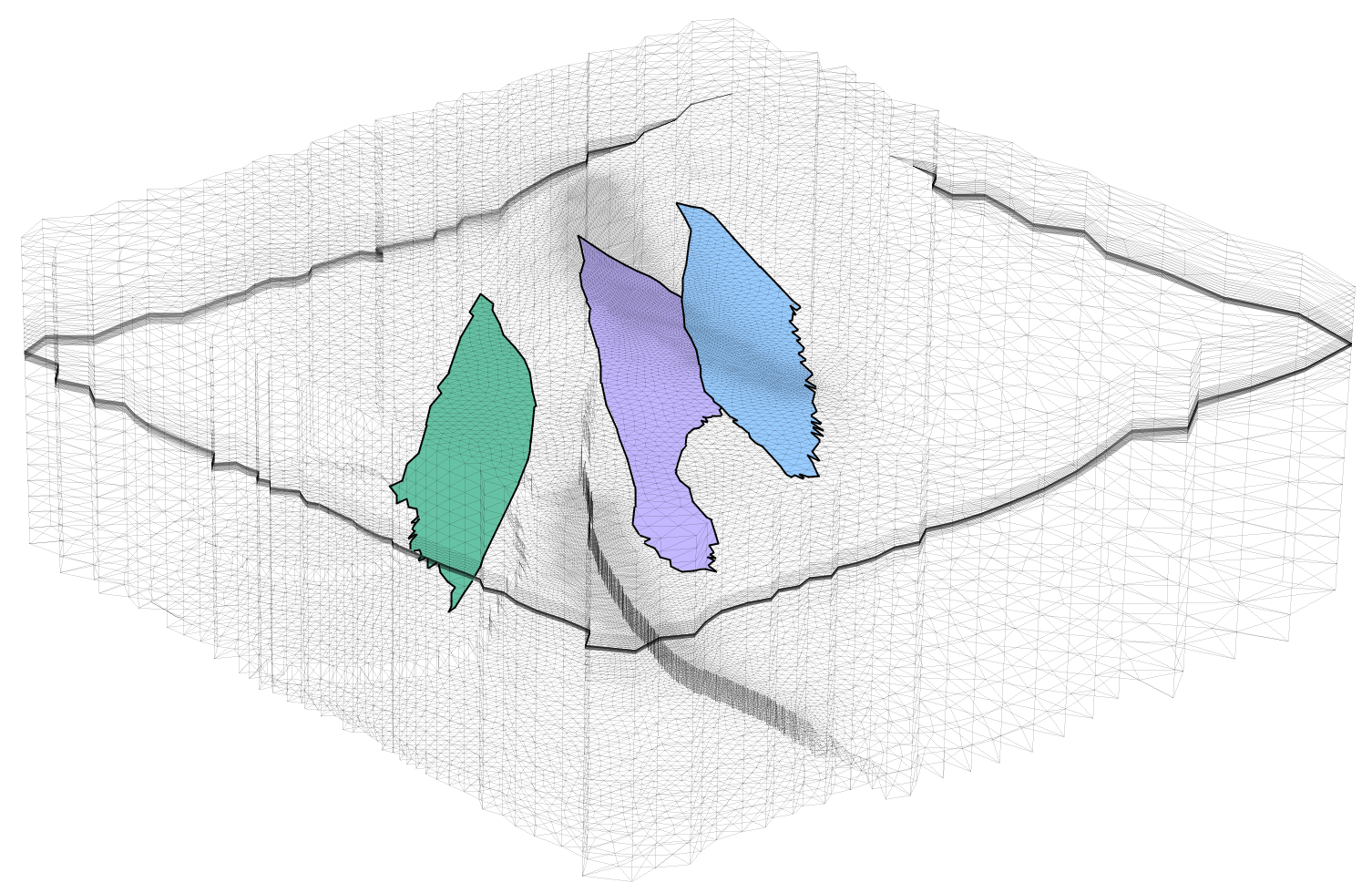
Geomechanical effects of seasonal gas storage
ATLAS has been used in several projects to predict the geomechanical effects of seasonal gas storage on depleted reservoirs.
The software computes the subsidence, the stress increase in the reservoir rock, in the caprock and in surrounding soil layers and the stability of the intersecting and surrounding faults.
Several post-processing tool are available as add-on (e.g. risk factor assesment [1])
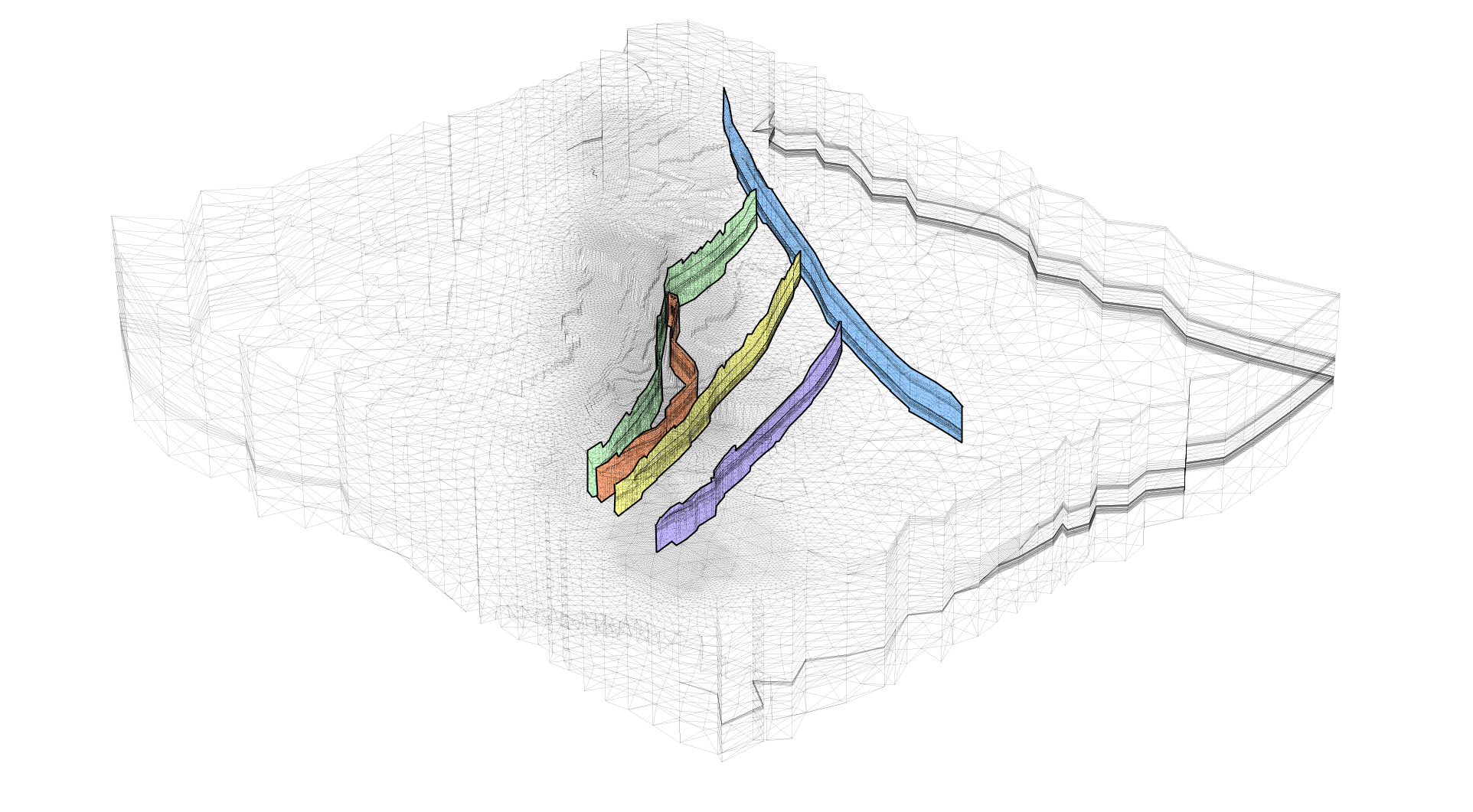
Fault activation due to CO2 storage
ATLAS has been used in several project to predict the geomechanical effects of CO2 storage.
The software computes the eventual activation of faults due to the variation of the stress condition within the soil layers. In particular, the active interface elements (those with a slip due to a stress variation) are identified.
The software allows for investigating different scenarios and strategies of injection, in order to maximize the capacity and avoid any environmental impact.
More information
ATLAS
THE FASTEST GEOMECHANICAL SOLVER FOR EXTREME-SIZE SIMULATIONS
